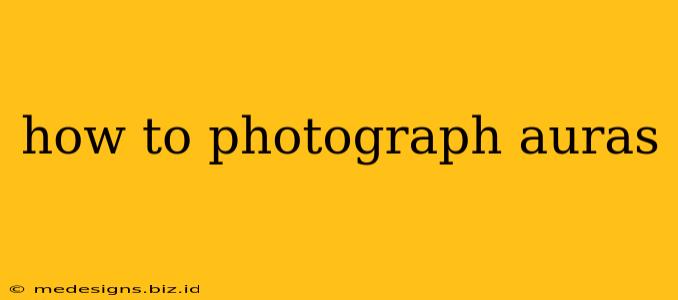Are you intrigued by the subtle energy fields surrounding living beings, often referred to as auras? Do you yearn to capture these ethereal emanations in a photograph? While scientifically proving the existence of auras remains a challenge, many believe in their presence and have developed techniques to visually represent them through photography. This guide will explore different methods for photographing auras, clarifying the process and dispelling some common misconceptions.
Understanding the Concept of Aura Photography
Before diving into the techniques, it's important to understand that capturing an "aura" in a traditional photographic sense is impossible. Standard cameras are designed to detect visible light, not the subtle energy fields that many associate with auras. The methods described below aim to create a visual representation of energy, often by interpreting subtle changes in light, color, or other photographic elements.
Types of Aura Photography Techniques
Several approaches exist, each with its own strengths and weaknesses:
-
Kirlian Photography: This method uses high-voltage electricity to ionize the air around an object, creating a discharge that can be captured on film. The resulting image shows a luminous glow around the object, often interpreted as an aura. However, this glow is a physical phenomenon related to electrical discharge, not necessarily an energy field. Note: This technique requires specialized equipment and caution due to the high voltage involved.
-
Using Infrared (IR) or Ultraviolet (UV) Photography: Some believe that auras might be detectable in the infrared or ultraviolet spectrum. While not directly capturing an aura, IR and UV photography can reveal details invisible to the naked eye, resulting in images that some interpret as showing energy fields. You'll need specialized cameras and filters for this.
-
Digital Image Manipulation: Post-processing techniques using image editing software can add color effects or create a glowing aura around a subject. While this method is readily accessible, it's crucial to be transparent about the digital enhancement, as it's not a direct capture of an energy field. Remember, ethical considerations matter!
-
Intuition and Meditation: Several photographers claim their success in capturing auras stems from a strong intuition, meditative practices, and connecting with their subjects on a deeper level. This approach is often combined with other techniques to enhance the photographic outcome and to amplify any subtle energy shifts.
Practical Steps for Aura Photography Experiments
Regardless of the technique you choose, here are some general tips to improve your results:
1. Prepare Your Subject:
- Relaxation and Meditation: Encourage your subject to relax and meditate before the shoot. A calm state might be associated with more subtle energy shifts.
- Clothing and Background: Use neutral-colored clothing and a simple background to avoid distractions.
2. Camera Settings and Equipment:
- Manual Mode: Shoot in manual mode for greater control over exposure settings, especially important for IR and UV photography.
- Experiment with ISO and Shutter Speed: Experiment to find the right balance to capture subtle light variations.
- Tripod: Use a tripod for sharp images, particularly with longer exposure times.
3. Post-Processing (If Applicable):
- Subtle Enhancements: If using digital manipulation, aim for subtle enhancements rather than creating overly dramatic effects.
- Transparency: Always be transparent about any post-processing applied to your images.
Dispelling Myths and Misconceptions
It's crucial to acknowledge that "aura photography" often doesn't capture a scientifically proven phenomenon. The images produced frequently represent artistic interpretations or the results of physical processes, not direct evidence of subtle energy fields.
Conclusion: Exploring the Art of Aura Photography
While the scientific validity of aura photography remains debated, it's undeniably a fascinating and creative exploration. By understanding the techniques and ethical considerations, you can embark on your own journey to capture visually captivating images that may represent energy, even if their interpretation remains a matter of belief and artistic expression. Remember, the process is as important as the result. Experiment, explore, and develop your personal style in this unique photographic endeavor.
